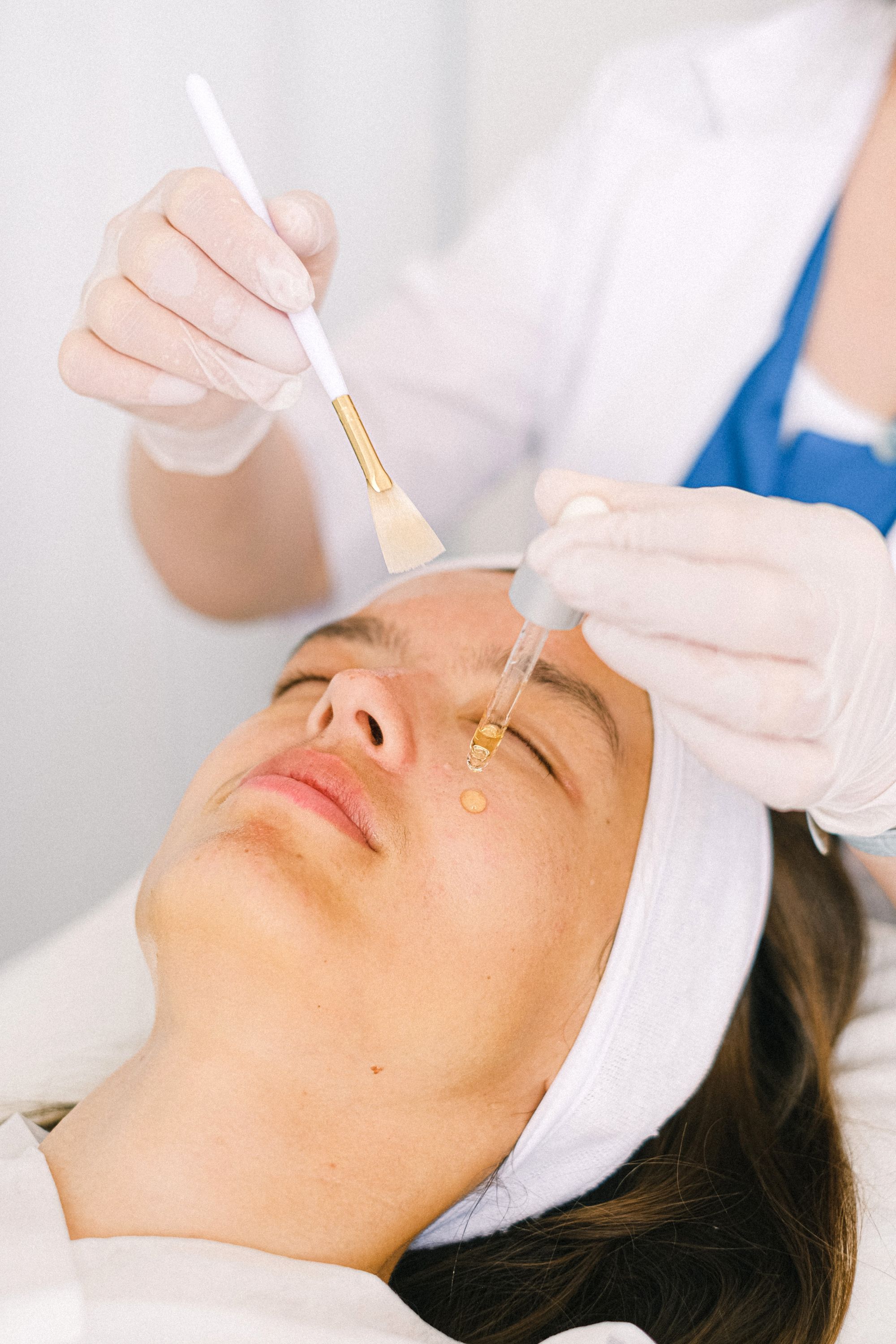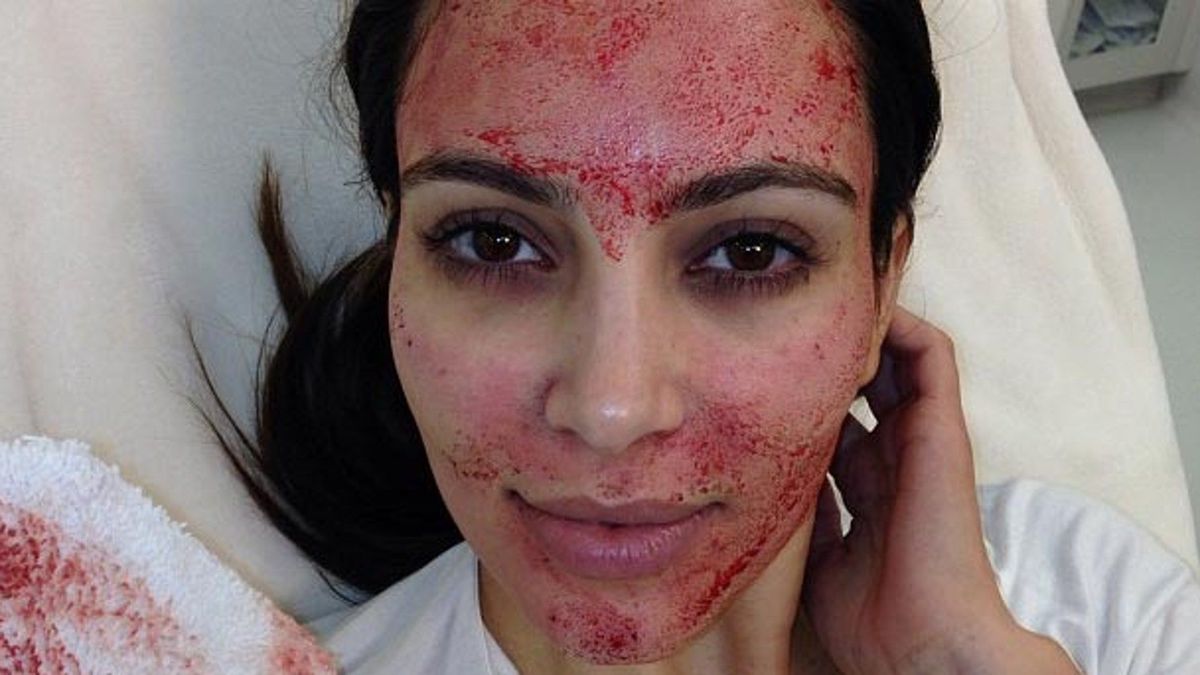If you are a skincare enthusiast then you must have heard of the Vampire Facial. It seems to be the latest trend that celebrities swear by for youthful, flawless skin. You don’t need more proof than the viral picture of Kim Kardashian with blood smeared all over her face! That wasn’t a Halloween look, it was a photo taken during Kim’s vampire facial session. In layman terms, a vampire facial involves puncturing the skin with microneedles and then applying the patient's blood on the face to encourage cell renewal, improve skin tone and skin elasticity. It may sound scary, but there is a scientific rationale as to why this facial actually works. Today, let us bust some myths about this skincare treatment and figure out what it is all about.
What Is A Vampire Facial And How Does It Work?
In clinical terms, a vampire facial involves microdermabrasion followed by PRP therapy. The first step of microdermabrasion involves puncturing the skin with microneedles. Microdermabrasion introduces micro-wounds on the skin, which provide a boost to the skin’s healing process. This leads to faster cell renewal and new collagen production, which results in youthful-looking skin. Performing microdermabrasion before PRP therapy ensures that the blood serum penetrates deeper into the skin, thereby increasing the efficacy of the treatment.
PRP therapy or Platelet Rich Plasma therapy aka PRP Treatments is the second step of the vampire facial. This step involves the application of one’s blood platelets on the face. These platelets are derived from the serum component of blood. They are blood cells that are responsible for the clotting of blood, which prevents bleeding in the case of injuries. Platelets encourage faster cell renewal and boost collagen and elastin production in the skin. They also help boost the antioxidant levels in the skin. The overall effect of PRP therapy is radiant, supple, and soft skin that looks youthful. You should be able to see the results of the procedure within a few weeks. These results tend to last for 18-20 months after you have completed all the sessions.

Is A Vampire Facial Painful?
As long as you visit a reputed clinic, a vampire facial should be an almost painless and completely risk-free procedure. The preparatory step of a vampire facial is a venipuncture or a blood draw, to collect the client’s blood from which the plasma is extracted. This blood is then processed in a centrifuge to separate the platelets that are applied to the client’s face post-dermabrasion. Contrary to what you might think, the actual process of vampire facials is almost painless. It is only the initial drawing of blood that can be painful for some. If you have ever experienced venipuncture during any medical procedure, you will know what to expect. It literally feels no more painful than a hard pinch!
The process of microdermabrasion itself is usually painless because of the fineness of the needles. A numbing cream is often applied to the face before the procedure to further eliminate any chances of pain. Also, the platelets that are applied on the face are derived from the client’s own blood in a sterile environment. Hence, they do not pose any health risks. The procedure is quite simple and straightforward. You can walk in and out of the clinic in a few hours and go back to normal life immediately!
The Aftercare Required
Your skin will require minimal aftercare post a vampire facial. You may be left with some amount of bruising and redness from the microneedles but that should fade on its own in a couple of days. Make sure to wear sunscreen during the day because your skin will be extra sensitive to the sun after the procedure. Avoid exfoliants for 2-3 days after the session. Also, apply gentle hydrating and moisturizing ingredients to allow your skin to heal fully.
Is It The Right Choice For Everybody?
A vampire facial can help those who are struggling with sun damage, acne scars, hyperpigmentation and premature wrinkles. It is, however, not recommended for those who are suffering from any kind of blood disease or clotting disorder. If you are consuming blood thinners, or have any medical disorder associated with blood, such as Hepatitis C or HIV, you are not a suitable candidate for this procedure. Those with sensitive skin should consult a dermatologist before opting for the facial.
The Cost Involved
The cost of a vampire facial will vary from clinic to clinic but will typically set you back by around a thousand dollars per session. In most cases, 3 or more sessions are needed for optimal results. You will have to space out your sessions too, as more than one session in a month is not recommended. I will recommend you to opt for a reputed clinic, even though that might cost you a little bit more. The procedure requires skill and hygiene to be a success. So, it is best to go to a clinic with excellent reviews.
Take It Up A Notch With A Vampire Facelift!
Vampire facials are often confused with a vampire facelift, but these are different procedures. Both these treatments involve plasma, but that is where the similarity ends. Micro-needling is an essential component of vampire facials as it creates channels for the penetration of plasma. On the other hand, in a vampire facelift, the plasma is injected into the skin along with hyaluronic acid fillers. These fillers help to eliminate fine lines while the plasma encourages skin cells renewal. The two ingredients complement each other in providing the client with youthful and supple skin. The fillers will show instant results, while the effect of PRP will be visible after a few weeks. Vampire facelifts are usually more expensive than a vampire facial, with one session typically priced at $2000. You can consult a board certified dermatologist or plastic surgeon to figure out which procedure is a better alternative for your skin.
To sum it up, the term Vampire Facials might be a marketing buzzword, but the technique is backed by cosmetic and clinical research. The process comes with minimal discomfort and offers visible results. If you have the budget and bravado for it, a vampire facial might be an excellent skincare investment for you!
FAQ:
What is a vampire facial?
The Vampire facelift facial is a simple process that requires only minimal downtime. For this, plasma rich in growth factors and healing properties from the patient's blood is injected into the layers of your skin. First, a topical numbing agent is applied to ensure that you feel no pain during the procedure. Then, a small needle is used to puncture the skin up to around 6-8 times on each side of your face and neck. The concentrated plasma is then infused into the skin using a small vacuum.
The procedure draws out fresh, new blood to the area of treatment and stimulates skin rejuvenation and the production of collagen. Collagen is a key element in ensuring that your skin stays young and vibrant. The procedure also helps improve the general texture of your skin. You can tell if you have undergone a platelet-rich plasma facial when there is increased color and firmness in the treated areas.
What to expect after the facial?
The numbing agent will wear off about 2 hours after the cosmetic procedure. You should avoid direct sunlight for 24 hours, and stay out of the sauna or hot tub. You might have some swelling and mild discomfort in the area, but these will subside within a day. The effects of PRP are visible immediately so expect to see your skin tone looking brighter and more radiant, soon after the treatment.
How much does a vampire facial cost?
The cost range from $600 to $1500 depending on the clinic.
What does a vampire facial do?
Benefits of vampire facial are manifold and include:
- Increased collagen production;
- Improved skin tone and texture;
- Reduces wrinkles;
- Anti-aging properties. This is particularly helpful in reducing acne scars, stretch marks, and fine lines. It evens out the complexion by stimulating the repair of damaged collagen found deep down in your skin layer. As a result, you will see more radiant-looking skin with a firmer texture.
Does vampire facial work?
In short, yes. There are several studies done that confirm its effectiveness.
Sources:
Alam M, et al. (2018). Effect of platelet-rich plasma injection for rejuvenation of photo-aged facial skin.
Can a ‘blood facial’ make you look younger? (2018).
Khatu SS, et al. (2014). Platelet-rich plasma in androgenic alopecia.
Rachul C, et al. (2017). Representations of platelet rich plasma in the news media.





